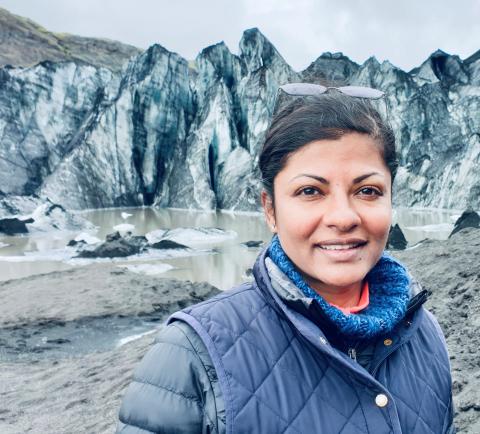Fahmida Bangert has served in transformational roles in higher education: establishing the Diversity at Bren Fund as class chair during her time at Bren, working to achieve ambitious sustainability goals at UC Berkeley and Stanford, and helping shape sustainability careers in the industry by serving as a board member and board chair for the Association for the Advancement of Sustainability in Higher Education. Today she is the Vice President of Sustainability at ITRenew. Fifteen years after graduating from Bren, Fahmida shares her story and perspective on a career in sustainability with the MESM Class of 2021 as graduation speaker.
What inspired you to earn a graduate degree in solving environmental problems?
Before I came to Bren, I’d had six years of work experience: first in financial services, and then in software. Eventually, I realized that my personal interest in the environment had nothing to do with the job that I was doing, and that if I kept on going, my career and my passion would always be disconnected. Inspired by what I saw was possible, I took a leap of faith to back to school and learn more about it.
I decided to pursue the Master of Environmental Science and Management because it was a program that would give me a broad view of environmental problems, but also very specific solution pathways. I believed I’d be able to merge my passion for environmental protection with my career.
I took a leap of faith 18 years ago to return to graduate school because at the time I felt that high tech and environmental sustainability were misaligned, and I wanted to explore an integrated approach to institutional change.
Why did you choose Bren?
Bren captivated my imagination right away. I chose it for three reasons. First: the people. When I met with the faculty and the current students, they were so approachable and focused on solutions. Second: the location. I’m a visual learner, and when I saw the beauty of the place, I just knew that I was going to be able to absorb what I learned easily in this setting. Third: I love the UC system. I appreciate the public institution’s ability to create a leadership cohort that can solve the problems of the tragedy of the commons, so to speak.
The second year master’s group project was also attractive to me. Coming from the working world, I understood the value of teaming up with other students to develop a solution for a real-world client. I knew it would be an important experience.

